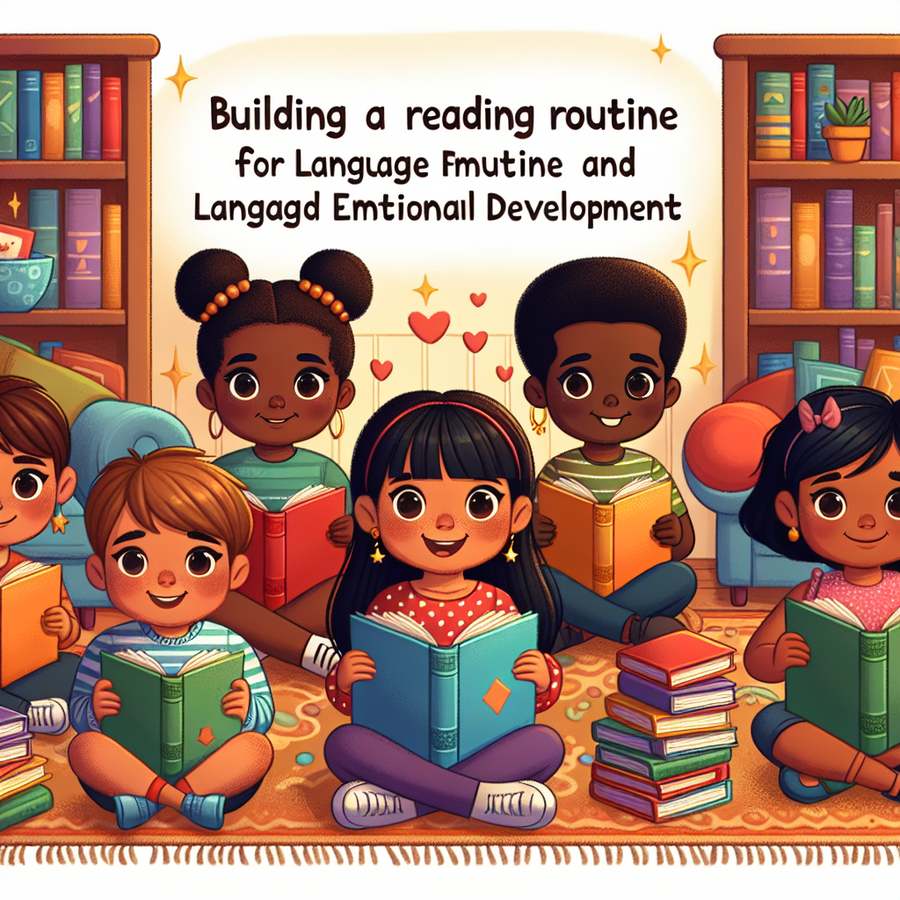Building a reading routine for language and emotional development is a foundational aspect of nurturing a child’s growing mind. From the soft murmur of a bedtime story to the lively tones of a daytime adventure, every book opened and every word read aloud contributes to a child’s blossoming language skills and emotional intelligence. This article will explore the profound benefits of establishing a reading routine, providing parents and caregivers with practical advice and strategies to make reading an integral part of their child’s daily life.
The Magic of Reading: Unlocking Language Skills and Emotional Growth
Reading to your child is more than just a quiet activity to settle them before bed. It’s a dynamic interaction that engages and nurtures the brain in multiple ways. Research has consistently shown that early exposure to reading significantly impacts language acquisition, literacy skills, and emotional development. These early interactions with books lay the groundwork for a lifelong love of reading and learning.
When discussing building a reading routine for language and emotional development, it’s essential to highlight how stories allow children to experience a range of emotions. They learn about empathy, joy, sadness, and more through the characters and narratives they encounter. This emotional exploration is critical for developing empathy and understanding the complexity of their own and others’ emotions.
Building a Reading Routine for Language and Emotional Development
Establishing a reading routine doesn’t require an elaborate setup or hours of uninterrupted time. It’s about consistency and making reading a natural part of your family’s daily life. Here are some tips to get started:
- Create a cozy reading nook that invites you and your child to explore books together.
- Set aside a specific time each day for reading. This could be before naptime, bedtime, or even during mealtime.
- Incorporate books that cater to your child’s interests and developmental stage. This will keep them engaged and looking forward to reading time.
- Use expressive voices and facial expressions to bring stories to life, enhancing your child’s understanding of emotions and language nuances.
By integrating these practices into your daily routine, you build a solid foundation for your child’s language and emotional development. Additionally, this routine fosters a closer bond between you and your child, creating precious moments of connection.
Choosing the Right Books: A Guide to Enhancing Your Reading Routine
Selecting books that resonate with your child’s age, interests, and developmental needs is crucial for maintaining their interest and ensuring the reading experience is both enjoyable and educational. Consider incorporating a variety of genres, including fairy tales, informative books, and stories that reflect real-life situations. This diversity not only enriches their vocabulary but also broadens their understanding of the world.
For parents seeking guidance on suitable books and reading strategies, numerous resources are available, including this comprehensive guide on building a reading routine for language and emotional development. Additionally, libraries and bookstores often have recommended reading lists based on age and interests, providing a valuable starting point for curating your child’s reading collection.
In conclusion, establishing a reading routine is a journey that offers immense benefits for a child’s language acquisition and emotional growth. By choosing the right books, making reading an enjoyable part of your daily routine, and utilizing the tips provided, you can unlock the magic of reading for your child. Remember, the goal is not just to teach them to read but to inspire a lifelong love for reading and learning.













